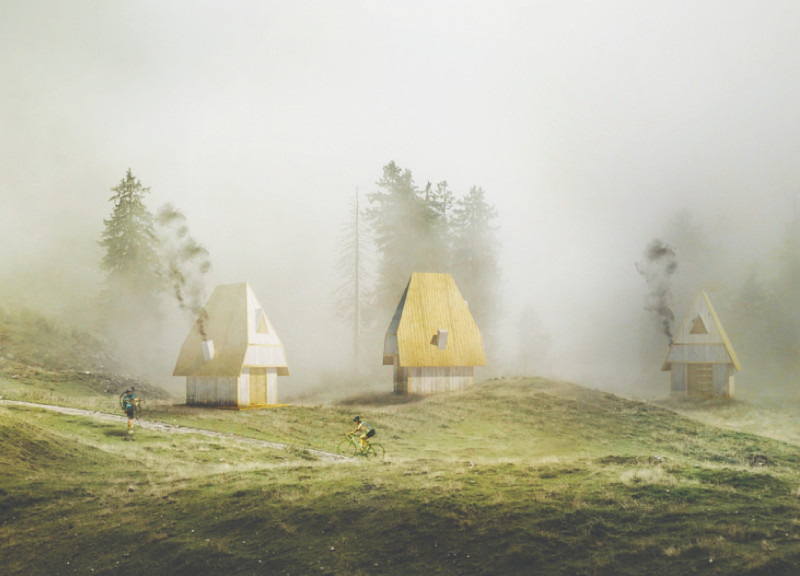5 key facts about this project
The European Velo Stops project introduces a practical architectural solution aimed at enhancing the cyclists' experience along the EuroVelo 6 route. This initiative seeks to create comfortable and functional rest points that reflect local cultural identities while promoting sustainable travel practices. The design integrates various important elements that cater to the needs of cyclists, including sheltered seating, bike storage, sanitary facilities, and information signage.
The project represents a commitment to fostering a cycling culture across multiple European nations while celebrating the unique characteristics of each location. By emphasizing regional architectural styles, the Velo Stops serve not only as functional spaces but also as extensions of the local cultural landscape. Each stop is an opportunity for cyclists to engage with their surroundings, fostering a sense of connection with the history and environment of the area.
Integrated Architectural Features
The architectural design of the Velo Stops emphasizes usability without sacrificing aesthetic appeal. Each stop maintains a consistent framework while allowing for regional variations in style, materiality, and form. Common features across the designs include weather-resistant roofs, easy access to bike storage, and facilities for resting and refreshments.
The roofs of the Velo Stops are designed to draw inspiration from traditional regional architecture, creating a sense of familiarity for users. Elements such as mansard roofs in France, conical roofs in Serbia, and hipped gables in Germany evoke local vernacular styles and help weave the stops into the cultural fabric of their locations.
Sustainable Design and Materiality
Sustainability is a core principle of the Velo Stops project, addressed through the choice of materials and construction methods. Wood serves as the primary structural material, providing a warm aesthetic while ensuring environmental soundness. Concrete is utilized for foundational purposes, enhancing durability. Glass is employed for windows, creating a connection to the outdoors and ensuring that natural light enters the structure.
Recycled metal is integrated into features such as bike racks and signage, reflecting a commitment to eco-friendly practices. The careful selection of these materials, paired with efficient design techniques, ensures that the Velo Stops can withstand varying environmental conditions while minimizing their ecological footprint.
In summary, the European Velo Stops project exemplifies a thoughtful merging of architecture, cultural representation, and sustainable design. The attention to local styles and user-centered amenities distinguishes it in a landscape filled with passive rest stops.
For those interested in a deeper exploration of the architectural plans, architectural sections, and architectural designs that inform this project, further details are accessible within the full project presentation. Understanding these architectural ideas can offer valuable insights into the impact and functionality of the Velo Stops along the EuroVelo 6 route.



























